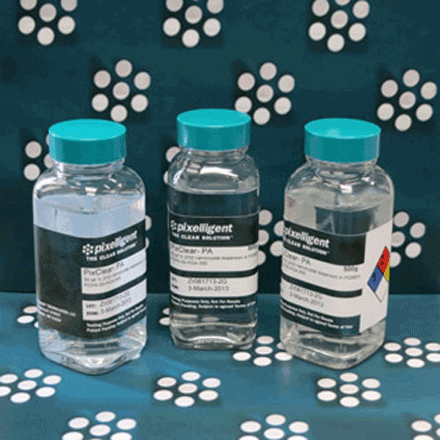Pixelligent Technologies, inventing PixClear® high-index nanocomposites for the OLED Display, HD Display, and Solid State Lighting markets, announced the release of a joint whitepaper with Fraunhofer ISC and Osram Semiconductor. The white paper demonstrates the dramatic efficiency impacts achieved by combining Pixelligent’s PixClear® high-index inks with Fraunhofer’s ORMOCER® inorganic-organic hybrid polymer matrix that are suitable for numerous optoelectronic applications.
 |
|
(Image: Pixelligent Technologies) |
“This joint development effort has produced best-in-class high-index films capable of delivering never before seen light extraction and operating efficiencies. The initial target applications include OLED, Display, Solid State Lighting, ITO index matching, and the potential for tuning dielectric properties of thin films for numerous optoelectric applications,” said Dr. Serpil Gonen Williams, VP Product development of Pixelligent.
The approach to use high-index ORMOCER® matrix materials for the synthesis of composites together with stable and monodispersed ZrO2 nanocrystals yields several advantages over conventional composites using epoxy and silicone materials. The refractive index of mixed solutions and cured thin-films were increased by up to 14 % for the low refractive index, aromatic-free ORMOCER®, and 9 % for the high refractive index, aromatic ORMOCER® respectively, and transparent, clear composite films were obtained after curing. The stability against aging under temperature and light irradiation was also evaluated and demonstrated a remarkable thermal and blue-light stability. In addition to all of these benefits, these new composites also improved the control of the film thickness and coating capabilities.
“This is a great validation of our PixClear® technology by two of the most respected technical organizations in the world, and a great example of how we work with leading formulation partners to deliver new levels of operating efficiencies to the OLED, Display, and Solid State Lighting markets,” said Craig Bandes CEO, Pixelligent.
To read the full whitepaper, visit here.












